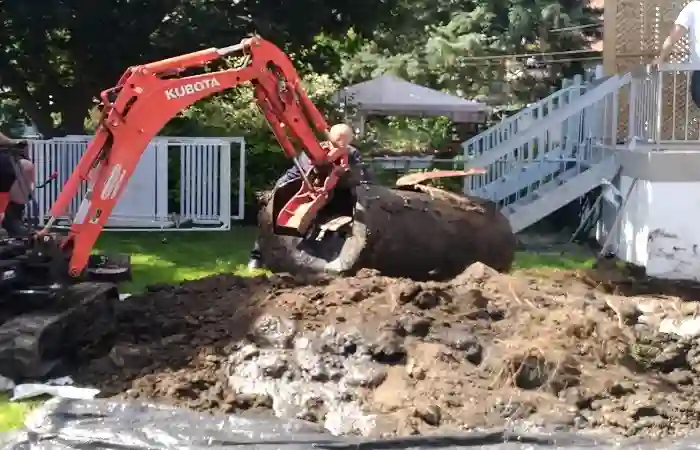The decision to remove an old oil tank from your property can be a daunting task, but with the right knowledge and a systematic approach, it’s a manageable DIY project. Whether you’re transitioning to a cleaner energy source or dealing with an outdated and potentially hazardous tank, this guide will walk you through the essential steps of oil tank removal, empowering you to tackle the project confidently.
Initial Assessment: Know What You’re Dealing With
Before diving into the physical removal, start with a thorough assessment of your oil tank and its surroundings. Check for any visible signs of damage or corrosion on the tank’s exterior. Assess the soil around the tank for unusual odors or discoloration, which could indicate leaks. If you’re uncertain about the tank’s condition, consider hiring a professional for a comprehensive inspection.
Legal Considerations: Permits and Regulations
Check local regulations and obtain the necessary permits before initiating the oil tank removal process. Many areas have specific guidelines regarding the removal and disposal of underground tanks. Complying with these regulations ensures a smooth process and prevents potential legal issues down the line.
Safety First: Protective Gear and Precautions
Safety is paramount when dealing with oil tank removal. Before starting, gather the appropriate safety gear, including gloves, safety glasses, and a respirator to protect against fumes. Ensure good ventilation in the removal area. If you encounter any unexpected challenges or uncertainties, do not hesitate to seek professional assistance.
Emptying the Tank: Draining Residual Oil
Begin by emptying the tank of any remaining oil. Use a hand pump or hire a professional to pump out the oil safely. It’s crucial to dispose of the oil properly, adhering to local regulations for hazardous waste disposal. Local recycling centers or waste management facilities often accept used oil.
Excavation: Digging Safely
Once the tank is empty, it’s time to excavate. Dig carefully around the tank, avoiding damage to utility lines or surrounding structures. A small excavation may be sufficient, but ensure enough space to access the tank easily. If you encounter challenges or uncertainties during excavation, consider consulting a professional.
Tank Removal: Lifting the Burden
With the tank exposed, carefully disconnect any remaining pipes or connections. Enlist help or use appropriate lifting equipment to remove the tank from the ground. Take your time and proceed with caution to avoid spills or damage during the removal process.
Cleaning and Inspection: A Thorough Once-Over
Once the tank is out, give it a thorough inspection. Look for signs of corrosion, rust, or other damage. Cleaning the exterior can help you assess its condition more accurately. If the tank is in good shape, you may consider repurposing it for non-oil storage or recycling it at a scrap metal facility.
Soil Assessment: Ensuring Environmental Health
Examine the soil around the tank for any signs of contamination. If you notice an unusual odor or discoloration, it may indicate a leak. In such cases, it’s essential to address the contamination promptly. Consult with local environmental authorities or professionals to determine the best course of action for soil remediation.
Waste Disposal: Responsible Handling
Properly dispose of the oil tank and any contaminated soil in accordance with local regulations. Recycling facilities or waste management centers often accept metal tanks for recycling. Ensure that you follow guidelines for hazardous waste disposal, contributing to an environmentally responsible removal process.
Site Restoration: Closing the Chapter
Finish the project by restoring the site to its original condition. Backfill the excavation area with clean soil, reseed disturbed areas, and address any landscaping or structural elements affected during the removal process. Leaving the site in good shape ensures a seamless transition from oil tank removal to a cleaner, safer property.
Conclusion:
Embarking on a DIY oil tank removal project requires careful planning, adherence to safety measures, and compliance with local regulations. By following this step-by-step guide, you can confidently take control of the process and transform an outdated or potentially hazardous oil tank into a thing of the past. Empowered with knowledge and a commitment to safety and environmental responsibility, you can successfully navigate the tank termination process and embrace a cleaner future for your property.



